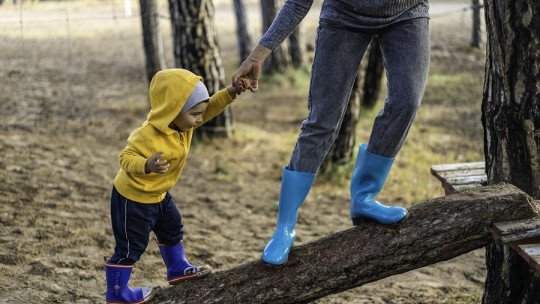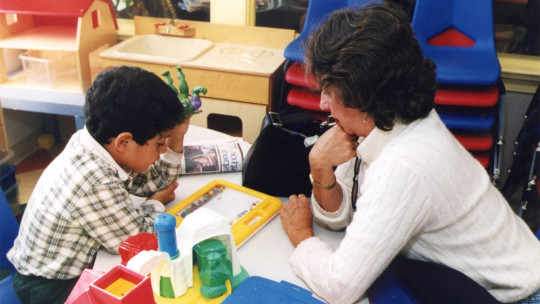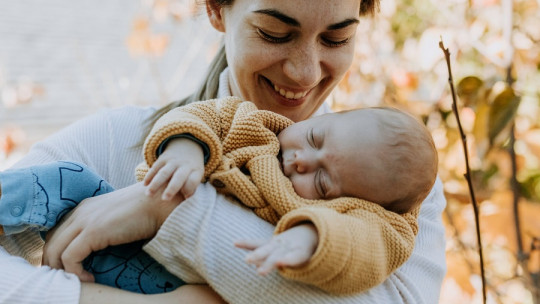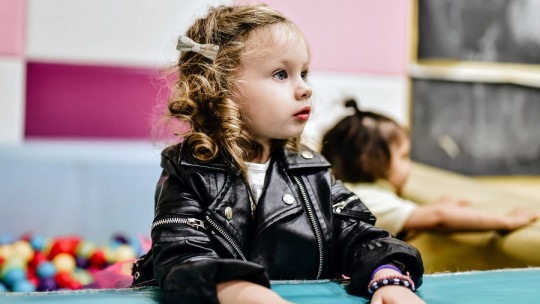Probably most of us have done some type of craft at some point, especially during childhood And it is possible that we remember that moment with some fondness, having been an activity different from usual and which resulted in an elaboration made by ourselves.
These creations are not only fun: they allow us to bond with the different elements we use and with the people with whom we make them, they make us organize and enhance creativity and the development of fine motor skills. In short, it is not a bad idea that if we have children in our care we suggest that they do some type of craft from time to time since it involves promoting different aspects as well as a possible entertainment and means of communication. That is why in this article we are going to offer instructions for carrying out different crafts for children
Crafts for children: a selection
Below we indicate a series of nine crafts for children that can be done with their help in a fun and enjoyable way, both when doing them and when enjoying the product made. All of them have been obtained from different books, web portals and tutorials.
1. Homemade clay
When we talk about making crafts we usually think about making a specific final product, with a specific or merely decorative function. However, the truth is that we can also make materials that children use for fun An example is clay. This preparation will serve both to make a craft and to awaken and stimulate culinary experimentation in the future.
All you have to do is mix flour, water, salt, oil and some food coloring in a mold to give it color. Approximately three cups of flour, one of salt, another of water and two tablespoons of oil would be a good proportion.
Although it is possible to give color with tempera paints, we recommend the use of food coloring since with them we can obtain a plasticine that would not be toxic if ingested It will be the proportions that will determine the properties of this clay. This plasticine is going to be quite durable, and it will allow us to make small crafts with our children.
2. The clock
A possible craft that can also be useful when learning the hours and how a clock works is, precisely, making a wall clock. To do this, it will be enough to a plastic plate, a marker, two dozen post-its, two strips of cardboard and a thumbtack
To begin, cut two rectangles of cardboard with one larger than the other, which will be the future hands of the clock. Nail them in the exact center of the plate (calculate first where it is with a ruler) with a thumbtack. After that, paint each of the hours on a post-it and then place it in order on the plate. If you want to make it more educational, you can put the minutes that would correspond to each of the hour numbers (that is, one corresponds to five minutes, two to ten…) and put them before the hour number in Yeah.
3. Fingerprint
A very simple type of craft that can be made tremendously original and fun. It is based on impregnating the child’s hands or feet (and ours, if we do something collaborative) and create some type of composition on a sheet of paper Later it is possible to add different additions to the handprint, for example making trees or animals.
4. Macaroni necklace
Probably one of the most typical and simple crafts, but equally entertaining. A package of macaroni, paint and thread will be enough for us. The child can paint the way he wants each of the macaroni that will be part of the necklace, and will insert them into a thread If desired, we can add some other type of element. Once finished, you will need to tie a knot to close it.
5. Paper puppets
Cardboard, glue, tape, scissors, paper and markers are the materials needed to make a simple version of paper puppets.
First of all, we will take a piece of paper and fold it in half, and then stick it with tape. We will fold the ends inward again, in the middle of the folded sheet. From the center where we join both ends, we fold again in the opposite direction. We can now open the two ends and put our hand through it so that it is possible to open and close the proto-puppet as if it were a mouth.
From now on, all that remains is to shape the creature or being that we want to build, gluing colored cardboard and other elements. Thus, we will glue cardboard of a specific color (for example pink) to the inside of the “mouth”. We can cut out a tongue out of cardboard so we can add it and make the puppet more fun. On the rest of the faces we can glue cardboard of another and other colors, and even draw elements such as circles, feather marks, or warts (it depends on the animal or being we do).
We will also have to cut two cardboard circles that will be the eyes of our creature, which we will decorate to taste. If we make several different puppets, we can even make a mini-theatrical performance.
6. Small notebooks
Another craft that also stands out for having some practical use is the creation of one or more notebooks. For it We will only need leaves and glue although we can also use some cardboard and markers.
The procedure is relatively simple: it involves taking a sheet of paper and folding it in half, and then folding it in half again but in the opposite direction. With these folds made and marked we will unfold the paper and see how we have a total of four folds, which we will cut.
We will fold each of these strips of paper in half and continue folding in the same direction two more times. We will continue gluing the ends of the strips together until we form a long twist of paper with numerous folds. We will close the folds until we obtain a strip similar to an accordion. We will glue the folds only in one direction, thus obtaining a small notebook. All we need to do is make the cover.
To do this, we will take a piece of cardboard, which we will fold in half both lengthwise and widthwise. We will cut one of them. In this we will mark the shortest side of the sheet. We will turn without reaching the mark, and we will do the same on the other side. We turn in the other direction, leaving a small space. Done this, we will have the cover almost finished By putting the notebook inside we can fold the ends inwards and glue the first and last daughters of the notebook on both sides to them. We already have our notebook, and we will only have to decorate it to taste.
7. Cardboard masks
Another very simple craft is making cardboard masks. All you need is cardboard, scissors, cardboard, markers, a rubber band and a lot of imagination. We can download some type of specific model to use as a template
The first thing will be to measure the approximate size of the head and transfer said size to the cardboard. We will have to approximately measure the distance between the eyes of the person who is going to wear it and use it to generate two holes through which it can be seen.
The next thing will be to give the desired shape to the cardboard, cutting out the shape we want (for example the shape of a dinosaur’s head or a character’s head/helmet). With the help of cardboard and markers, we will finish decorating it.
Finally you will also need to make two small holes at the ends of the mask. We will cut a plastic rubber in order to obtain a single strip and we will tie the ends in these holes.
8. Author T-shirt
This last craft that we are going to propose is also quite simple. The basic and main element is a T-shirt, preferably plain, in one color. From here we can use different paints, such as tempera paints, in order to give it the personality we want. Also we can set it on a specific theme like nature or the beach.
9. Paper flowers
Making paper flowers is relatively easy to do. To do this we will need some type of paper, such as tissue or crepe paper, although we can also use colored cardboard. In this case we are going to make some roses.
For a start We will cut the paper into rectangular strips, and we will proceed to roll them on themselves forming a small cone and gluing the final part so that it remains fixed. We will do the same with strips of different sizes, inserting some cones inside others and gluing them.
After this, we can proceed to insert it into a long toothpick, which we will later paint green, and we can also cut out one or more leaves for the flower from green cardboard, which we will hook onto the toothpick. If we have a polystyrene sphere and we make a lot of roses, we could even stick the roses into it and form a bouquet (which we would wrap with suitable paper).









